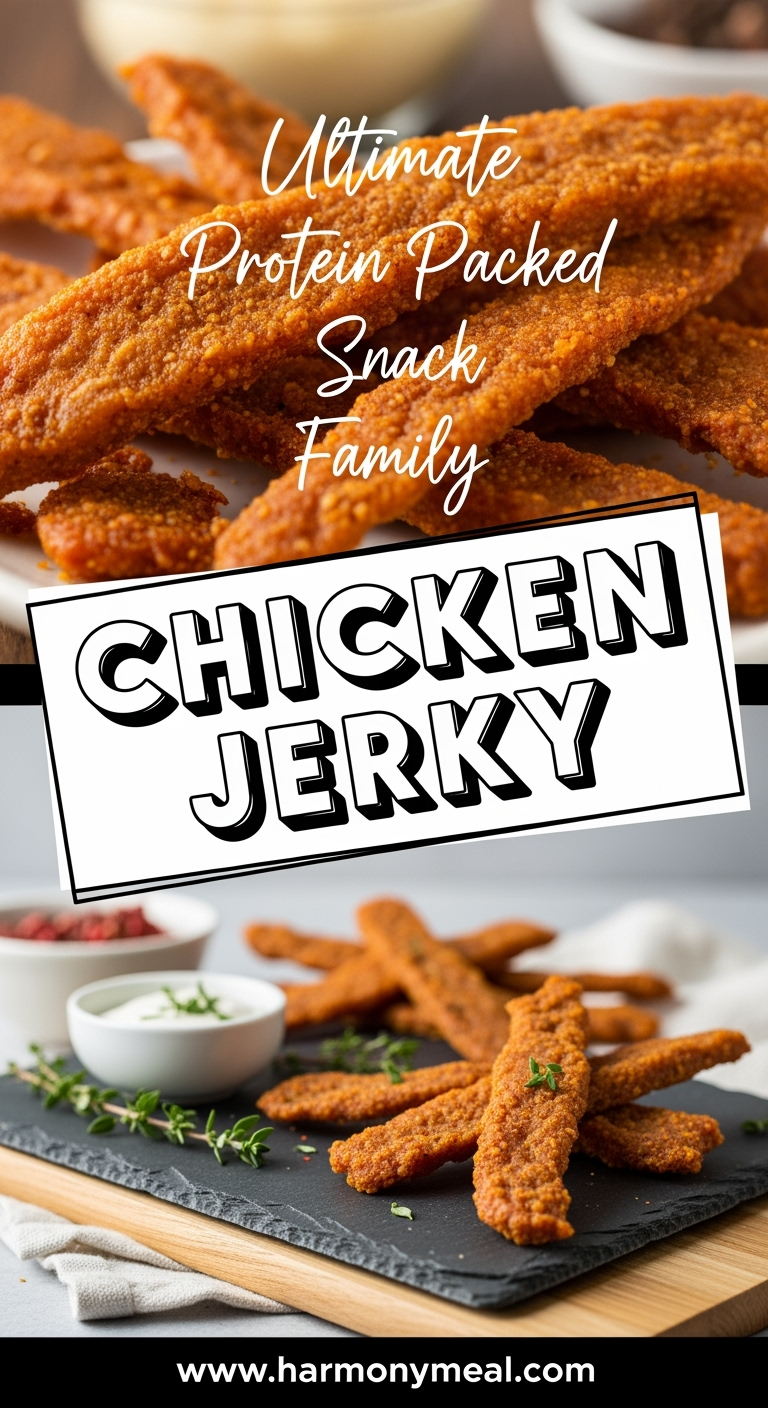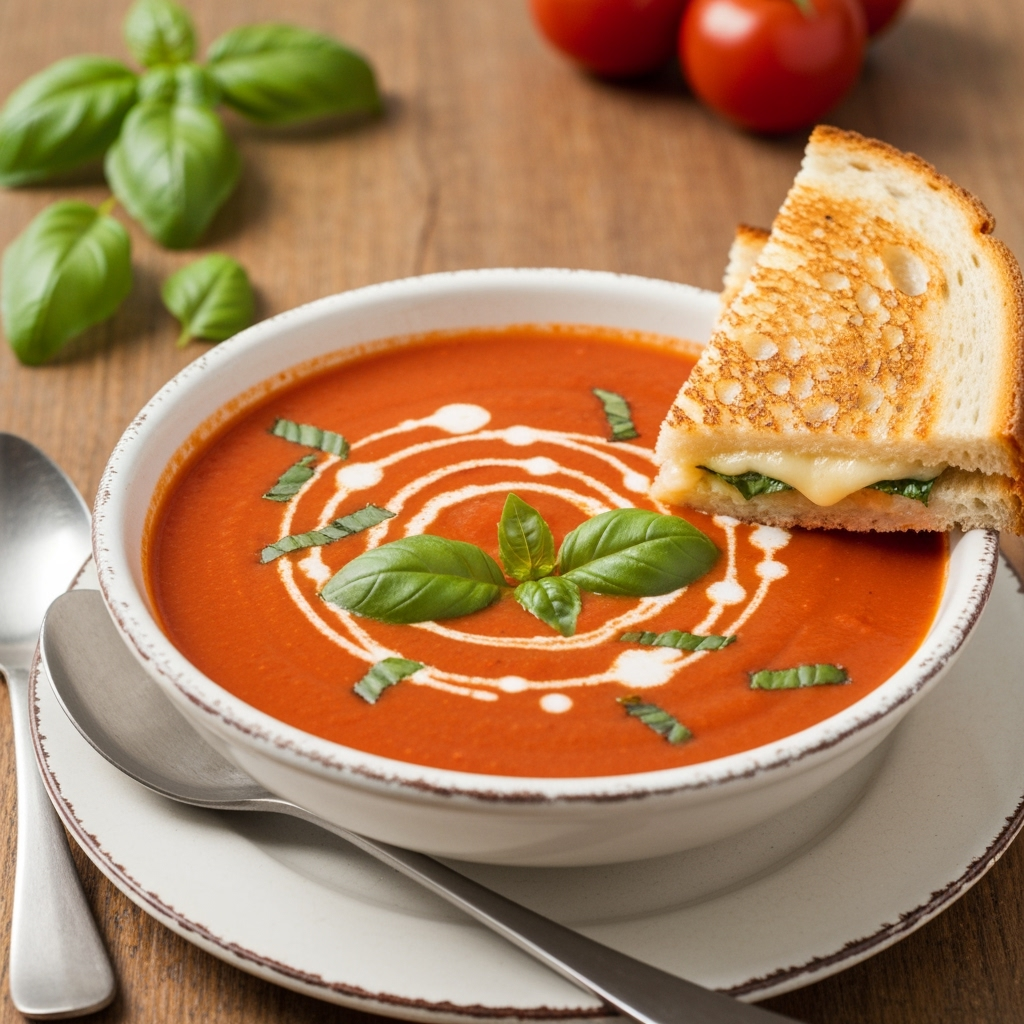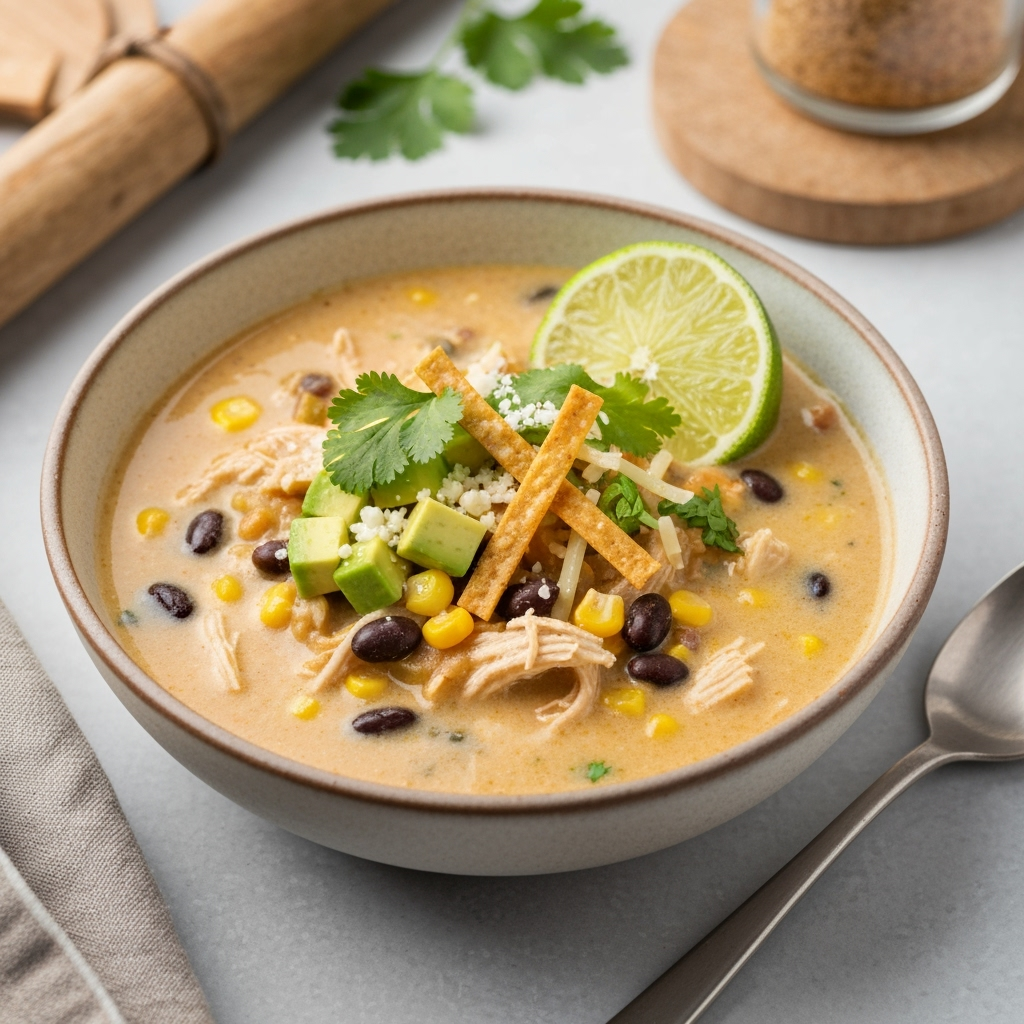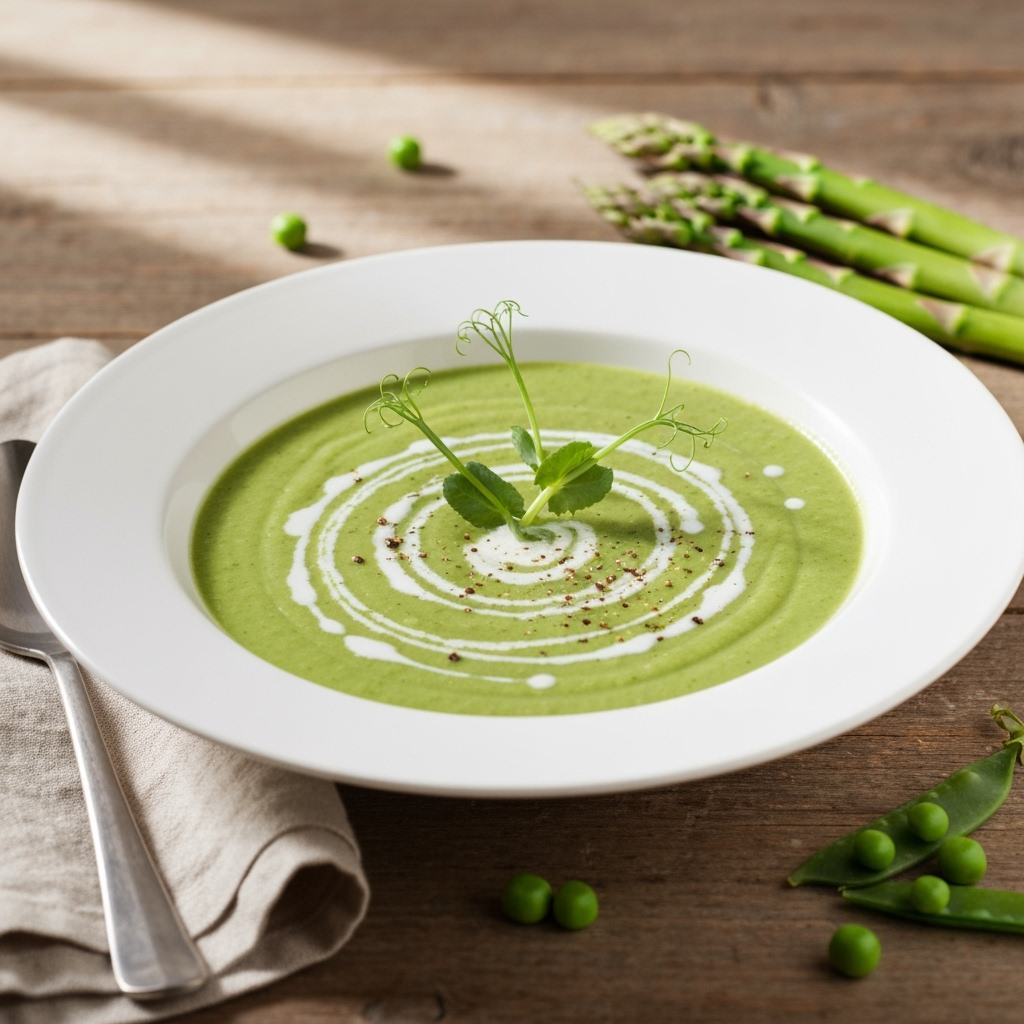Have you ever wondered why store-bought chicken jerky costs so much when it seems so simple to make? That question hit me last year during a family hiking trip when my teenage son devoured an entire bag of chicken jerky in under 10 minutes – a $12 bag, I might add! As I watched him reaching for a second package, I made a mental note: “Learn to make chicken jerky at home.” Fast forward to today, and homemade chicken jerky has become a staple in our household. It’s not just economical; the flavor and quality beat anything from the store. Plus, knowing exactly what goes into our chicken jerky gives me peace of mind about what my family is eating.
Table of Contents
Ingredients for Perfect Chicken Jerky
Chicken jerky starts with quality ingredients that create that perfect chewy texture and savory flavor we all crave. I’ve tested dozens of marinade combinations, and this one consistently delivers that mouthwatering taste that keeps my family reaching for more.
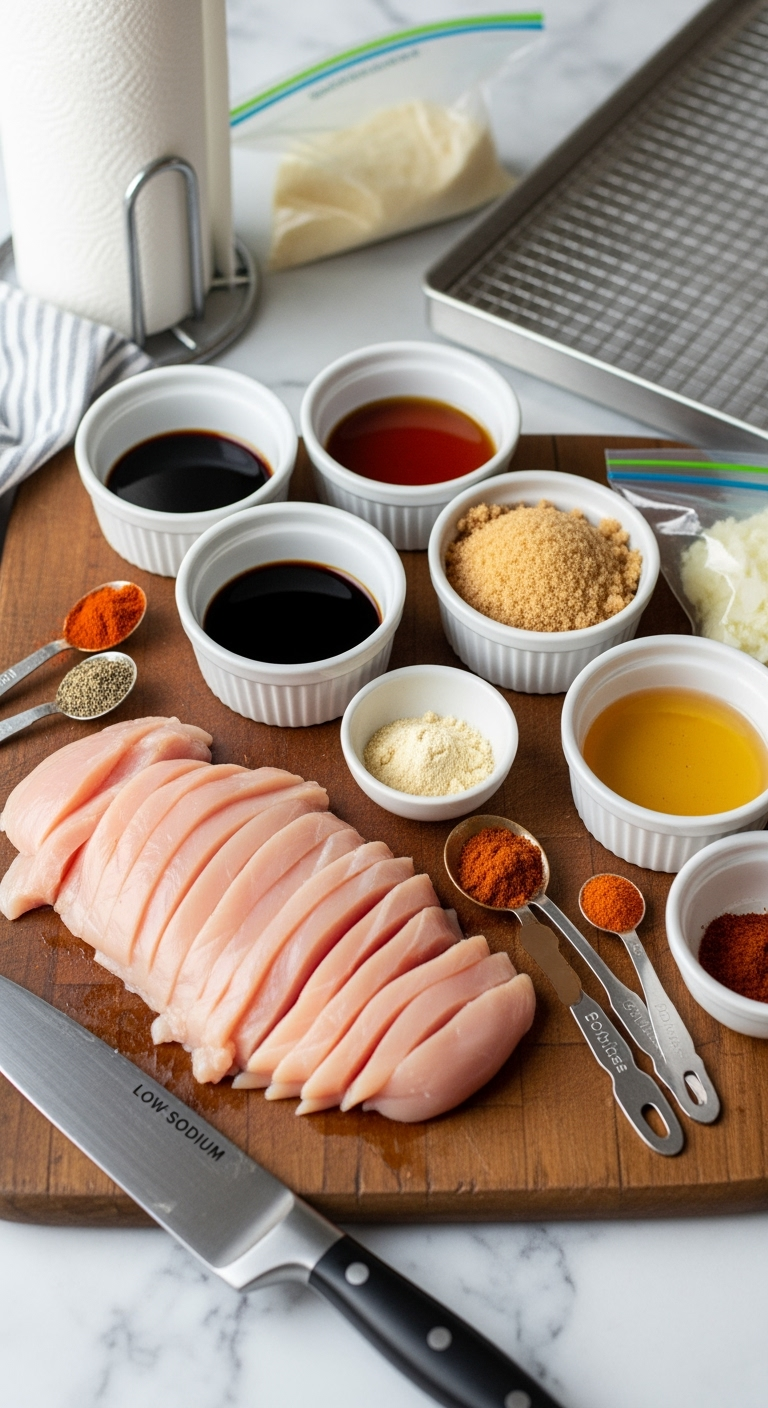
- 2 pounds boneless, skinless chicken breasts
- ¼ cup low-sodium soy sauce
- 2 tablespoons Worcestershire sauce
- 2 tablespoons brown sugar (or honey for a natural alternative)
- 1 tablespoon smoked paprika
- 2 teaspoons garlic powder
- 1 teaspoon onion powder
- 1 teaspoon black pepper
- ½ teaspoon cayenne pepper (optional for heat)
- 1 tablespoon apple cider vinegar
If you’re watching your sodium, you can reduce the soy sauce and increase spices for flavor. For a gluten-free version, substitute tamari for the soy sauce. Vegans looking for chicken jerky alternatives might want to check out our mushroom jerky recipe that mimics that meaty texture surprisingly well.
Timing for Chicken Jerky Preparation
- Prep time: 30 minutes
- Marinating time: 6-24 hours (overnight works best)
- Drying time: 4-6 hours (dehydrator) or 3-4 hours (oven)
- Total time: 10-30 hours (mostly hands-off)
While the total time seems long, actual active prep is minimal, making chicken jerky an easy weekend project with rewards that last for weeks.
Step-by-Step Instructions for Foolproof Chicken Jerky
Making chicken jerky isn’t complicated, but following these specific steps ensures food safety and the best texture every time.
1. Prepare the Chicken
Partially freeze chicken breasts for about 1-2 hours until firm but not solid. This makes slicing much easier and more consistent. Using a sharp knife, slice the chicken against the grain into ⅛-inch to ¼-inch strips. For chicken jerky with the best texture, try to keep the thickness uniform.
2. Mix the Marinade
In a large bowl, combine all marinade ingredients and whisk until the brown sugar dissolves completely. The marinade should taste slightly stronger than you’d like the finished jerky to taste, as some flavor will dissipate during drying.
3. Marinate the Chicken
Add chicken strips to the marinade, ensuring each piece is fully submerged. Cover and refrigerate for at least 6 hours, preferably overnight. The longer it marinates, the more flavorful your chicken jerky will be.
4. Prepare for Drying
Remove chicken from marinade and pat each piece dry with paper towels. This crucial step removes excess moisture and speeds up the drying process. Discard the used marinade.
5. Arrange for Drying
If using a dehydrator: Arrange chicken strips on dehydrator trays with space between each piece for air circulation.
If using an oven: Place a wire rack on a baking sheet lined with foil (for easy cleanup). Arrange chicken strips on the rack without touching.
6. Dry the Chicken Jerky
For dehydrator method: Set temperature to 160°F (71°C) and dry for 4-6 hours until the chicken jerky bends and cracks but doesn’t break.
For oven method: Preheat to 175°F (80°C), the lowest setting on most home ovens. Prop the door open slightly with a wooden spoon to allow moisture to escape. Dry for 3-4 hours, checking regularly.
Nutritional Information for Chicken Jerky
Per 1 oz serving (about 3-4 pieces):
- Calories: 70
- Protein: 13g
- Carbohydrates: 2g
- Fat: 1.5g
- Sodium: 280mg
Chicken jerky packs a serious protein punch while staying low in fat and calories, making it an ideal snack for fitness enthusiasts. Unlike beef jerky, chicken jerky typically contains significantly less saturated fat while delivering comparable protein.
Equipment Needed for Chicken Jerky
- Food dehydrator OR oven with wire racks
- Sharp knife (a chef’s knife works well)
- Cutting board
- Large mixing bowl
- Plastic wrap or ziplock bags for marinating
- Paper towels
- Airtight containers for storage
While a dehydrator makes chicken jerky preparation easier, don’t worry if you don’t have one. A standard home oven works perfectly fine with a few minor adjustments.
Why You’ll Love This Chicken Jerky Recipe
My family immediately noticed the difference when I switched from store-bought to homemade chicken jerky. Here’s why this recipe has become our go-to:
- It’s significantly more economical – making chicken jerky at home costs about 1/3 of store-bought versions
- You control the ingredients – no preservatives, artificial colors, or mystery additives
- Customizable flavor – adjust the spice level, sweetness, and seasonings to your family’s preferences
- Perfect for meal prep – make a big batch on Sunday for grab-and-go protein all week
- Kid-approved – even picky eaters love the savory-sweet flavor profile
When my son’s basketball teammates tried this chicken jerky at their tournament, I went home with five recipe requests from parents. That’s when I knew this recipe was truly special.
Healthier Alternatives for Chicken Jerky
While this chicken jerky recipe is already pretty healthy, you can make adjustments to suit different dietary needs:
- Lower-sodium version: Reduce soy sauce by half and increase spices like garlic and onion powder
- Sugar-free chicken jerky: Replace brown sugar with monk fruit sweetener or a small amount of apple juice concentrate
- Paleo-friendly: Substitute coconut aminos for soy sauce and use raw honey instead of brown sugar
- AIP-compliant: Skip the nightshades (paprika, black pepper, cayenne) and use ginger, turmeric, and herbs instead
- Keto chicken jerky: Omit the brown sugar entirely or use a small amount of keto-friendly sweetener
You can find more dietary-specific protein snacks in our special diets section if you’re looking for additional options.
Serving Suggestions for Chicken Jerky
While chicken jerky is perfect straight out of the container, here are some creative ways to enjoy it:
- Chop and add to trail mix with nuts and dried fruits for a protein-boosted hiking snack
- Layer thin slices in wraps or sandwiches for an extra protein kick
- Crumble into salads instead of croutons for a savory, protein-rich topping
- Pack in lunch boxes – chicken jerky doesn’t need refrigeration for day trips
- Serve on charcuterie boards alongside cheeses and crackers
- Dice and add to scrambled eggs for a quick protein-packed breakfast
During camping season, we include chicken jerky in our morning oatmeal packets for a savory-sweet breakfast that keeps us energized on the trails.
Common Mistakes to Avoid When Making Chicken Jerky
In my chicken jerky journey, I’ve made a few mistakes that taught me valuable lessons:
- Slicing too thick: Thick pieces take forever to dry and can develop an unpleasant texture. Aim for ⅛ to ¼ inch thickness.
- Skipping the partial freeze: Room temperature chicken is much harder to slice uniformly, leading to inconsistent drying.
- Not patting dry after marinating: Excess moisture dramatically increases drying time and can promote bacterial growth.
- Setting temperature too high: High heat cooks the chicken instead of drying it, resulting in brittle, overdone jerky instead of pleasantly chewy pieces.
- Storing before completely cool: Warm chicken jerky creates condensation in containers, which can lead to mold. Always cool completely before storing.
After my first batch turned out too salty and brittle, I learned that patience and attention to detail make all the difference in creating perfect chicken jerky.
Storing Tips for Chicken Jerky
Properly stored chicken jerky can last for weeks, making it an excellent make-ahead protein option:
- Cool completely before storing to prevent condensation
- Store in airtight containers or vacuum-sealed bags
- Keep at room temperature for 1-2 weeks
- Refrigerate for 3-4 weeks of freshness
- Freeze for up to 6 months in airtight containers
I like to portion our chicken jerky into small containers so we can grab one for a day trip without opening the main supply. For extra protection against moisture, add a food-grade silica gel packet to your storage container.
Conclusion
Homemade chicken jerky has transformed our family’s snack game. It’s the perfect protein-rich option that satisfies cravings without the guilt or expense of store-bought versions. The process might seem intimidating at first, but once you make your first batch, you’ll wonder why you didn’t try it sooner. The control over ingredients, flavor customization, and cost savings make this chicken jerky recipe worth the small time investment.
Next time you’re planning a road trip, packing school lunches, or just want to stock your pantry with healthy snacks, remember this chicken jerky recipe. Your wallet and taste buds will thank you! Have you tried making chicken jerky at home? Drop a comment below to share your experience or ask questions – I’d love to hear from you!
FAQs About Chicken Jerky
Can I use chicken thighs instead of breasts for chicken jerky?
Yes! Chicken thighs work wonderfully for jerky and often result in a slightly more tender product due to their higher fat content. Just be sure to trim visible fat before slicing and expect a slightly shorter shelf life.
How do I know when my chicken jerky is done?
Properly dried chicken jerky should bend and crack but not break completely. It shouldn’t feel moist or show any signs of rawness when torn open. When in doubt, it’s better to dry a little longer than to underdry.
Is homemade chicken jerky safe?
Yes, when prepared properly. The key safety factors are using the correct temperature (160°F minimum), ensuring uniform thin slices, and drying completely. Some recipes recommend pre-cooking the chicken to 165°F before dehydrating for extra safety.
Can I make chicken jerky in an air fryer?
Yes! Set your air fryer to its lowest temperature (usually around 180°F) and dry for about 2-3 hours, checking frequently. Place chicken in a single layer and consider using a rack insert for better air circulation.
How much chicken jerky does 2 pounds of raw chicken make?
Two pounds of raw chicken breast typically yields about 10-12 ounces of finished jerky. Remember that meat loses roughly 2/3 of its weight during the dehydration process.
Chicken Jerky Secrets: How to Make Your Own Healthy Snack Fast
Protein-packed, budget-friendly, and bursting with customizable flavor, this homemade chicken jerky is a healthy snack your whole family will crave.
- Prep Time: 30 minutes
- Cook Time: 4-6 hours (dehydrator) or 3-4 hours (oven)
- Total Time: 10-30 hours (includes marinating)
- Yield: 10–12 oz jerky 1x
- Category: Snacks
- Method: Dehydrating
- Cuisine: American
Ingredients
- 2 pounds boneless, skinless chicken breasts
- ¼ cup low-sodium soy sauce
- 2 tablespoons Worcestershire sauce
- 2 tablespoons brown sugar (or honey)
- 1 tablespoon smoked paprika
- 2 teaspoons garlic powder
- 1 teaspoon onion powder
- 1 teaspoon black pepper
- ½ teaspoon cayenne pepper (optional)
- 1 tablespoon apple cider vinegar
Instructions
- Partially freeze chicken for 1-2 hours, then slice against the grain into ⅛ to ¼-inch strips.
- Mix all marinade ingredients in a bowl and whisk until sugar dissolves.
- Add chicken to marinade, cover, and refrigerate for 6-24 hours.
- Remove chicken, pat dry with paper towels, and discard marinade.
- Arrange strips on dehydrator trays or oven rack with space between pieces.
- Dry in dehydrator at 160°F for 4-6 hours or in oven at 175°F for 3-4 hours with door slightly ajar, until jerky bends and cracks without breaking.
Notes
Patting the chicken dry after marinating is crucial for food safety and drying efficiency. Cool completely before storing to prevent mold formation.
Nutrition
- Serving Size: 1 oz (about 3-4 pieces)
- Calories: 70
- Sugar: 1g
- Sodium: 280mg
- Fat: 1.5g
- Saturated Fat: 0.5g
- Unsaturated Fat: 1g
- Trans Fat: 0g
- Carbohydrates: 2g
- Fiber: 0g
- Protein: 13g
- Cholesterol: 30mg
Follow & Join the Harmony Meal Community
📌 Love indulging in rich and cheesy comfort food?
Get inspired with more crave-worthy breakfasts, comforting dinners, and irresistible desserts.
👉 Follow us on Pinterest for easy-to-save recipes and meal ideas you’ll actually want to make.
📘 Let’s be foodie friends!
Join our community of passionate home cooks and flavor chasers.
👉 Follow Harmony Meal on Facebook to share your own dishes, get exclusive content, and connect with others who love to eat and create.

